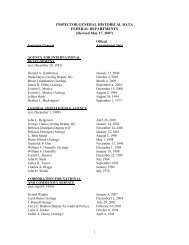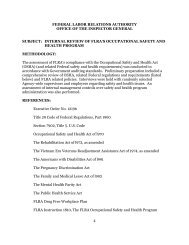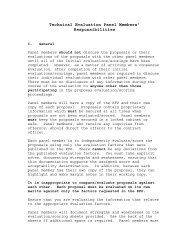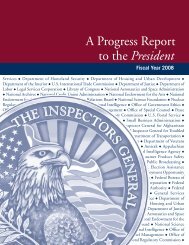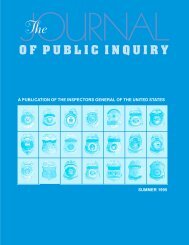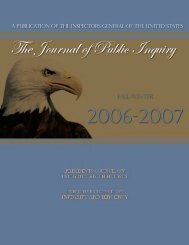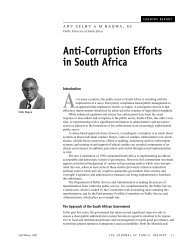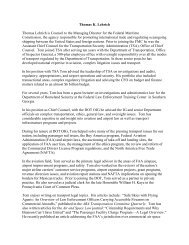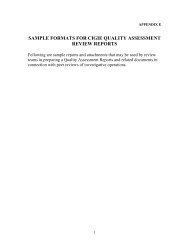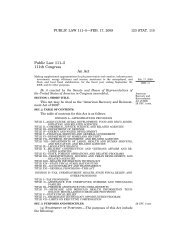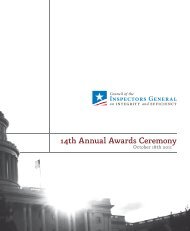GAO-12-208G, Designing Evaluations: 2012 Revision
GAO-12-208G, Designing Evaluations: 2012 Revision
GAO-12-208G, Designing Evaluations: 2012 Revision
Create successful ePaper yourself
Turn your PDF publications into a flip-book with our unique Google optimized e-Paper software.
Chapter 3: The Process of Selecting an<br />
Evaluation Design<br />
unit in the sample. Consequently, sample survey information is usually<br />
acquired through structured interviews or self-administered<br />
questionnaires. Most of the information is collected in close-ended form,<br />
which means that the respondent chooses from responses offered in the<br />
questionnaire or by the interviewer. <strong>Designing</strong> a consistent set of<br />
responses into the data collection process helps establish the uniformity<br />
of data across units in the sample. (For more on designing and<br />
conducting surveys, see <strong>GAO</strong> 1991, Dillman 2007, Fowler 2009, or Willis<br />
2005.)<br />
A qualified survey specialist should be involved in designing and<br />
executing questionnaire surveys that will be relied on for evidence on the<br />
evaluation questions, whether the surveys are administered in person, by<br />
telephone or mail, or over the Internet. Survey specialists can help ensure<br />
that surveys are clearly understood, are quick and easy to complete, and<br />
obtain the desired information. Subject matter experts should review the<br />
survey to assess whether technical terms are used properly, respondents<br />
are likely to have the desired information and will be motivated to<br />
respond, and the questionnaire will provide a comprehensive, unbiased<br />
assessment of the issues.<br />
Federal executive agencies must adhere to guidance that OMB’s Office of<br />
Information and Regulatory Affairs issues on policies and practices for<br />
planning, implementing, and maintaining statistical activities, including<br />
surveys used in program evaluations (OMB 2006). In addition, executive<br />
branch agencies must submit certain proposals to collect information from<br />
the public for OMB’s review and approval to ensure that they meet the<br />
requirements of the Paperwork Reduction Act. <strong>GAO</strong>, as a legislative<br />
branch agency, is not subject to these policies.<br />
A potentially less costly alternative to conducting an original survey<br />
(especially one with a large national sample) is to pay for additional<br />
questions to be added to an ongoing national survey. This “piggy-back”<br />
strategy is only useful, of course, if that survey samples the same<br />
population needed for the evaluation. Another useful alternative data<br />
collection approach is to link data from sample surveys to administrative<br />
data systems, enabling the evaluator to obtain new information on, for<br />
example, individuals, their neighborhoods, or their program participation.<br />
(For more on record linkage and privacy protection procedures, see <strong>GAO</strong><br />
2001.)<br />
Page 24 <strong>GAO</strong>-<strong>12</strong>-<strong>208G</strong>



